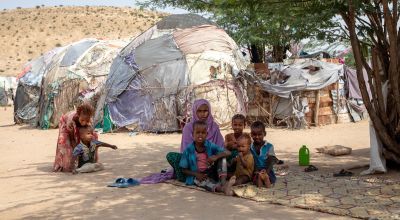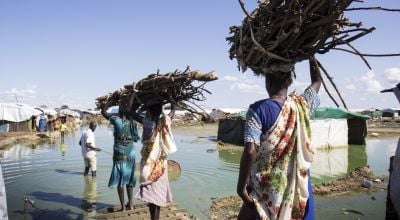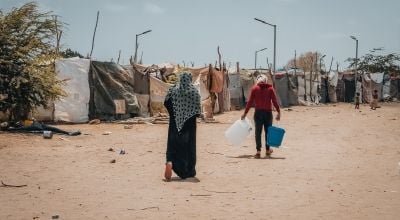
Read our 2023 annual report

Knowledge Hub
The world’s 10 poorest countries in 2024
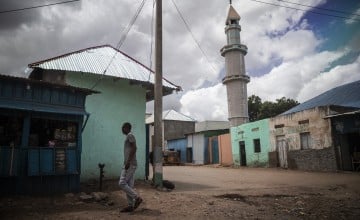
At Concern, we go where we are needed most in our fight against extreme poverty. But where is that, exactly?
What determines the world’s poorest countries isn’t as clear-cut as dollars and cents. Poverty defines an economic situation in a specific moment in time, and is so multi-dimensional as a concept that any ranking is going to be incomplete and not fully representative. What's more, categorising the poorest countries in the world isn’t as simple as ranking total wealth. Data are often hard to come by in some of the most vulnerable countries, and relying on the gross domestic product (GDP) as a ranking factor doesn’t account for all of a country’s wealth.
So for the purposes of this ranking, we’re going to focus on the United Nations’s 2023-24 Human Development Index (HDI). This takes into account:
- Gross National Income (GNI)
- Life expectancy at birth
- Expected and mean years of schooling
- The UN’s HDI value
- Additionally, the UN’s HDI ranking now accounts for “planetary pressure” — aka the effects of climate change
It's never a complete picture, but it gives us a more intersectional look at how we may approach ranking countries around poverty.
While poverty is a measurable fact of life, it does not ultimately define a country, a community, or an individual. The fight against poverty, if it is to be won, rests in the hands of the people we work with. Our job is to help them find the tools and resources they need.
10. Sierra Leone
After more than a decade of fighting, the civil war in Sierra Leone ended in 2002. While the country enjoyed a relatively smooth transition to peace, the effects of conflict on poverty and development are still very much felt here — in addition to more recent crises such as the 2014-16 Ebola epidemic, an increase in natural disasters, and the Covid pandemic. After years of economic improvement, the World Bank recorded a dramatic increase in inflation rates between 2021 and 2022 (11.9% and 27.2%, respectively). This is reflected in the poverty rates for the country: An estimated 26% of Sierra Leoneans live below the international poverty line across the country, and that figure jumps to 60% in rural areas.
» Learn about Concern’s work in Sierra Leone
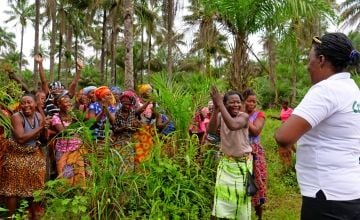
9. Burkina Faso
Political unrest, conflict, and climate change have left Burkina Faso facing the worst humanitarian crisis in the country’s history — and a crisis largely “forgotten” in western media. Conditions improved somewhat in 2023: Inflation fell to 0.7% (compared to 14.1% in 2022), and the extreme poverty rate decreased slightly from 26.3% to 25.6%. However, the country has limited natural resources and more than 40% of Burkinabe live below the poverty line. Lasting improvement in poverty rates hinges on how well the security situation holds. Unfortunately, violence continued in 2023 and into 2024.
» Learn more about the crisis in Burkina Faso
» Learn about Concern’s work in Burkina Faso
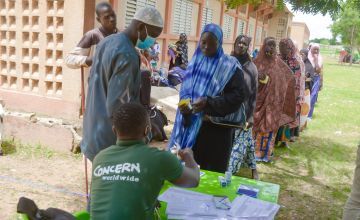
8. Yemen
Nearly a decade of conflict, combined with the effects of climate change, has left nearly 80% of Yemenis living below the poverty line, making it the “poorest” country in the Middle East (and the only country on this list not located in Africa). This is due in large part to a common economic impact of war: conflict leads to economic contractions and inflation, just as many civilians are left without steady work — and, by extension, salaries. A UN-brokered truce in 2022 led to some improvements in the economy, however a blockade on oil exports in 2023 undid that work. Addressing the historical economic inequalities within this country will be one key to creating lasting peace.
» Learn more about the crisis in Yemen

7. Burundi
A landlocked country in East Africa, bordering Rwanda, the Democratic Republic of the Congo, and Tanzania, Burundi is one of the most densely-populated countries in the world, with roughly 75% of that population living below the poverty line. Many are still recovering from a bloody civil war that ended in 2005, and dealing with the impacts of climate change in a country that is 80% agrarian. The country saw some economic growth in 2023 (2.7%) compared to 2022 (1.8%), and, according to the World Bank, is expected to reach 3.8% this year, as part of a larger government commitment to consolidating debts and improving the economic outlook, with a long term goal stated as: “Emerging country in 2040, developed country in 2060.”
» Learn about Concern’s work in Burundi
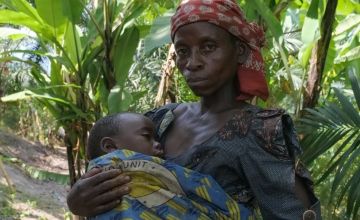
6. Mali
The fourth-largest country on the African continent, Mali’s capital of Timbuktu once flourished as a trading post. A neighbour of Burkina Faso (No. 9) and Niger (No. 4), it now faces many of the same security challenges as other countries in the Sahel, as well as the impacts of the climate crisis. Between national and regional conflict over the last 12 years and the long-term effects of the pandemic, the country has also seen rapid increases in poverty levels, with 90% of Malians living below the poverty line.
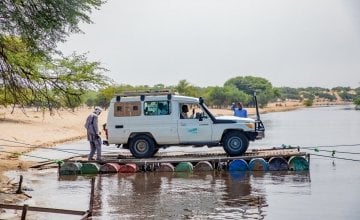
5. Chad
Despite a $4 billion pipeline that links the country’s oil fields to coastline terminals, Chad is one of the world’s poorest countries owing to a lack of infrastructure and both local and regional conflict. This has left over 42% of the population living below the national poverty line, and more than 35% living below the international poverty line ($2.15 per day). This latter rate of extreme poverty represents a significant rise over the last five years. The crisis in Sudan has complicated matters for the country, which in 2023 projected an additional 600,000 refugees fleeing the neighbouring conflict. The longer this war goes on, the worse the humanitarian and economic situation will be in Chad. This is one of several barriers the country faces to ending poverty, including internal insecurity, upcoming elections, and climate change.
» Learn about Concern’s work in Chad
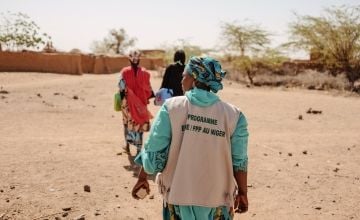
4. Niger
According to the World Bank, the number of people living below the international poverty line in Niger increased by an estimated 1.1 million in 2023, meaning that over 52% of the country’s population now live on less than $2.15 per day. This is due to a mix of similar circumstances faced by other countries in the Sahel, including inter-factional conflict, climate change, and an overall unstable economy left as a vestige of the country’s colonial past. (Like many countries in Africa that were former European colonies, Niger gained independence in 1960, but the decolonization process left its infrastructure and economy on shaky ground.) Last year’s coup and resulting sanctions placed further stress on the most vulnerable Nigeriens via inflation and rising costs for food and other essentials.
» Learn about Concern’s work in Niger
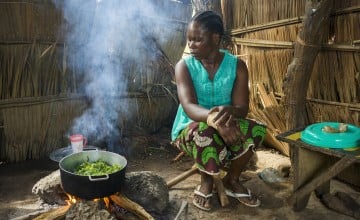
3. Central African Republic
After more than a decade of crisis in the Central African Republic, the country has not been able to enjoy the dividends of peace. The conflict lingers on and has hindered the country’s development, with the World Bank declaring that economic activity “ground to a complete halt” in 2022 following major flooding and fuel shortages. A report on poverty in the CAR published last year by the World Bank — the first in-depth study of its kind — reveals that 70% of the country’s population live in extreme poverty. This correlates with living conditions for the country’s population of 6.1 million people: 90% live without electricity.
» Learn about Concern’s work in the Central African Republic
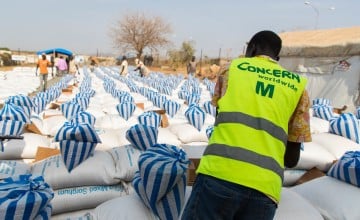
2. South Sudan
The youngest country in Africa is also one of the poorest: Since gaining independence in 2011, South Sudan has faced two periods of civil war, with a current — fragile — peace deal in place. The country is also susceptible to droughts and floods, further setting back progress and leaving 80% of the country’s population living below the poverty line. 2024 will be a decisive year for the country, with elections tentatively scheduled for December. This is a critical aspect of a lasting peace for the country, and one that will also be crucial towards stabilising the economy, addressing the other risks civilians face, and allowing families to build sustainable livelihoods and futures.
» Learn more about the crisis in South Sudan
» Learn about Concern’s work in South Sudan
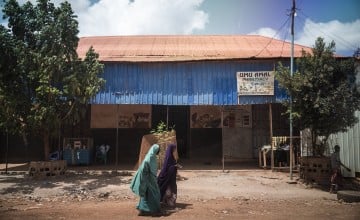
1. Somalia
Over the last several decades, Somalia has faced a cycle of crisis, including major droughts, conflict, hunger, and weak governance. Roughly 70% of Somalis live below the poverty line, and 90% live in what’s known as “multidimensional poverty” — poverty based on poverty and education rates as well as access to infrastructure. The country was, alongside Ethiopia and Kenya, at the centre of a recent multi-year drought crisis across the Horn of Africa, one of the worst the region has seen in the last century, and has faced further setbacks due to the Covid-19 pandemic and conflict in Ukraine. While there has been GDP growth over the last few years, it’s been slight — 2% real GDP growth each year — and the per capita GDP has dropped by roughly 0.8% each year.
» Learn more about the crisis in Somalia
» Learn about Concern’s work in Somalia
Concern’s work to end poverty
Ending poverty is the core mission of Concern. All of our programs and approaches are designed to further progress towards this goal by addressing some of the root causes of poverty.
Our approaches to this are rooted in an understanding that poverty is a cycle: Those who are most marginalised by the societies in which they live (whether on the basis of gender, class, ethnicity, sexuality, or a combination of intersecting factors) have fewer resources and methods to handle risks such as natural disasters or conflict. We work to address both these inequalities and risks, enabling communities — especially those furthest behind — to build both a safety net for immediate shocks and livelihoods to support themselves and their families in the longer term.
This approach allowed us to reach 36 million people across 25 countries last year with programs focused on emergency response, livelihoods, health and nutrition, gender equality, education, and climate change.



